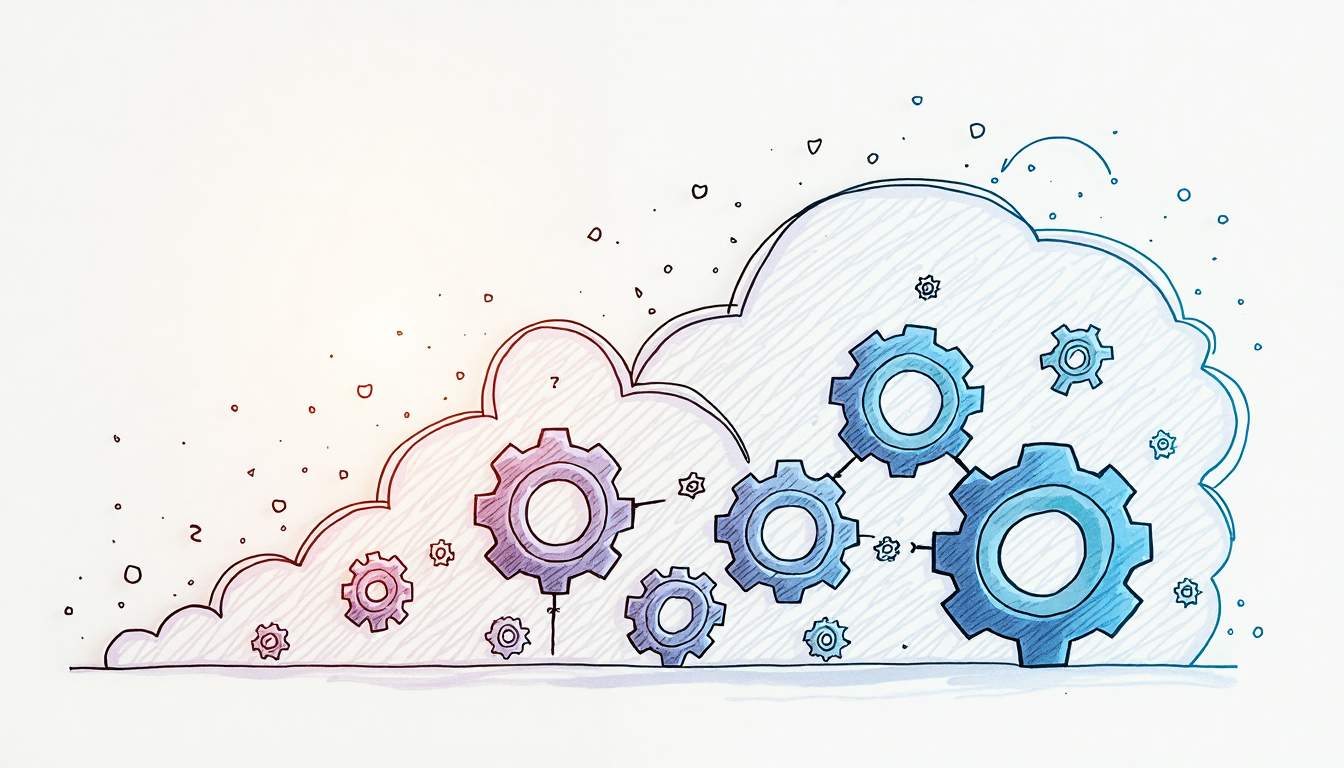Enterprise Digital Transformation: Building Scalable IT Teams for Legacy System Modernization
Every industry has felt the push toward digitization, yet few conversations inspire as much anxiety in the boardroom as the prospect of modernizing decades-old core systems. Leaders understand that sleek customer apps and data-driven decision making cannot rest on brittle, monolithic code written before cloud computing was conceived. To translate vision into results, enterprises must evaluate where they stand, decide what to modernize first, and assemble teams that can scale delivery without compromising business continuity. The following guide explores each step, offering data-backed insights and pragmatic examples for executives, architects, and transformation leads.
Digital Transformation Assessment
Assessment is where ambition becomes actionable strategy. Organizations that skip this phase often misallocate budgets or underestimate the cultural change required. A 2023 McKinsey study revealed that 70 percent of digital transformation programs fail to meet stated objectives, and insufficient up-front analysis was the most cited root cause. A structured assessment therefore sets guardrails, aligning modernization initiatives with measurable outcomes rather than vague aspirations.
Aligning Business and Technology Objectives
Transformation begins by translating C-suite goals—such as faster time-to-market, cost reduction, or improved regulatory compliance—into concrete technology targets. If the goal is a 25 percent reduction in loan-processing time, the assessment must spotlight which legacy workflows, data stores, or manual approvals create bottlenecks. Establishing these relationships helps executive sponsors see technology work not as an expense but as an enabler of revenue and risk mitigation.
Modern enterprises also map customer journeys to technical touchpoints. For example, if 40 percent of support calls stem from outdated account-management portals, upgrading that module may yield a faster ROI than a full system overhaul. By tying every modernization choice to customer or employee value, the assessment becomes a persuasive roadmap, not just a technical inventory. This approach not only enhances customer satisfaction but also fosters a culture of innovation within the organization, as employees become more engaged when they see the direct impact of technology on their daily tasks and customer interactions.
Mapping the Current IT Landscape
An accurate inventory extends beyond applications to include databases, integration points, licensing arrangements, and security controls. Gartner predicts that by 2025, 90 percent of currently deployed enterprise applications will require replacement, rewriting, or modernization. Yet many firms cannot list which components run on unsupported operating systems or rely on end-of-life middleware. Automated discovery tools, complemented by interviews with veteran engineers, reveal hidden dependencies that could derail later sprints if left unaddressed.
The assessment phase should categorize systems into four buckets—retain, rehost, refactor, or retire—based on their strategic value and technical debt. Decision matrices accelerate consensus across IT, finance, and operations, ensuring that high-value workloads receive priority investment while sunset candidates are scheduled for decommissioning. Additionally, understanding the interdependencies between systems can lead to more informed decisions about which applications can be modernized in tandem, thereby reducing downtime and enhancing overall system resilience during the transformation process.
Quantifying Readiness and Risk
Readiness scores synthesize findings into a single view for stakeholders. Criteria usually include architectural complexity, data criticality, regulatory exposure, and talent availability. A mission-critical billing engine written in COBOL might score low on readiness due to scarce skill sets and high integration complexity, indicating a need for phased refactoring rather than a big-bang rewrite. Conversely, a peripheral marketing microsite may be safe to lift-and-shift into containers within one sprint.
Moreover, the readiness assessment can also highlight potential risks associated with each component. For instance, systems that are heavily reliant on outdated technology may pose significant cybersecurity threats, necessitating a more urgent modernization approach. By integrating risk assessment into the readiness scoring, organizations can prioritize not just based on business value but also on the urgency of mitigating vulnerabilities, ultimately leading to a more secure and resilient IT infrastructure as they embark on their digital transformation journey.
Legacy System Modernization
Once the assessment clarifies priorities, the modernization phase turns potential into deliverables. Legacy systems, often described as the “beating heart” of the enterprise, require surgical precision: downtime costs money, and missteps erode stakeholder confidence. IDC forecasts that global spending on application modernization will top $24 billion in 2024, underscoring the scale of the opportunity and the competition for talent and tools.
Unpacking Technical Debt and Risk Exposure
Technical debt accrues when short-term fixes outpace long-term architecture. Symptoms include duplicated code, obsolete libraries, and tightly coupled modules that resist change. Beyond slowing delivery, technical debt introduces risk: a single security flaw in an outdated framework can expose millions of customer records. In 2022, an insurance firm’s 30-year-old claims system was breached through an unpatched messaging component; remediation and fines exceeded $100 million. Framing modernization as risk reduction resonates with boards and regulators, supporting budget approval.
Selecting the Right Modernization Path
Not every application merits the same treatment. Common paths include:
Rehosting or “lift-and-shift,” which moves workloads to cloud infrastructure without code changes. This yields quick operational savings but preserves monolithic architectures.
Refactoring rewrites portions of an application—often by extracting microservices—to enhance scalability and maintainability.
Rearchitecting moves the entire solution to a new paradigm, such as serverless or event-driven design. Although costly, this unlocks the most value when legacy constraints suffocate innovation.
Case Example: Core Banking Revamp
A mid-tier bank with 12 million customers modernized its 25-year-old core platform by adopting a “strangler pattern.” Payment and customer-onboarding modules were refactored into microservices, leaving the ledger on the mainframe during the interim. Over 18 months, the bank reduced overnight batch cycles by 60 percent and launched a real-time balance API used by fintech partners. Incremental extraction minimized risk while demonstrating tangible wins to regulators and investors.
Scalable Team Building
Even the best modernization plan falters without the right people. Enterprises must balance the institutional knowledge of veteran staff with the fresh perspectives of cloud-native engineers. The 2023 Stack Overflow Developer Survey found that 62 percent of engineers now prefer hybrid or fully remote roles, making location-agnostic talent strategies essential. Scalability here is twofold: growing headcount as project velocity increases, and embedding continuous learning so skills scale with technology advances.
Forming Multidisciplinary Squads
High-performing squads integrate software engineers, QA specialists, UX designers, security analysts, and product owners under a shared mission. This structure, popularized by Spotify, reduces hand-offs and empowers teams to own features end to end. A manufacturing giant piloted such squads for its supply-chain modernization; cycle time for new functionality dropped from eight weeks to two, and release quality improved markedly.
Key to success is psychological safety. When team members trust they can raise architectural concerns without blame, they surface issues earlier, saving rework. Regular retrospectives and clear escalation channels nurture this environment, translating into higher throughput and stronger morale.
Balancing Internal Upskilling and External Hiring
Legacy experts hold irreplaceable domain knowledge, yet cloud transformation demands new skill sets. A blended workforce strategy often proves optimal. Internal staff receive targeted training—think Kubernetes workshops or domain-driven design courses—while specialized roles such as site reliability engineers or data scientists are hired externally. This approach preserves institutional memory while injecting modern practices. Deloitte reports that companies combining upskilling with selective hiring see a 15-percent higher project success rate than those relying solely on recruitment.
Leveraging Global Delivery Models
Hybrid onshore-nearshore-offshore delivery provides 24-hour development cycles and cost flexibility. Time-zone overlap windows facilitate daily stand-ups, while follow-the-sun models advance code across regions. Yet coordination matters more than geography. Shared coding standards, automated CI/CD pipelines, and real-time dashboards ensure that teams in São Paulo, Warsaw, and Atlanta commit to one source of truth. A telco modernizing its billing stack used such a model to maintain 97 percent sprint predictability despite a 400-person distributed team.
Cultural integration accelerates velocity. Rotational programs—where engineers spend several weeks embedded in counterpart offices—build rapport that remote meetings alone cannot. Organizations investing in cross-site visits see 20 percent fewer defects linked to miscommunication, according to the Project Management Institute.
Implementation and Change Management
Execution turns strategy and talent into shipped value. Yet even flawless code can stumble if change management lags. Employees accustomed to legacy workflows may resist new interfaces, while regulators scrutinize any shift in data handling. Structured rollout plans therefore blend technical milestones with communication and training, ensuring adoption keeps pace with delivery.
Agile Governance and Metrics
Scaled agile frameworks, when combined with lightweight governance, help enterprises retain flexibility while satisfying compliance. Rather than blanket sign-offs, guardrails—such as automated policy checks in the CI/CD pipeline—catch violations early. Metrics focus on outcomes: lead time, deployment frequency, mean time to restore, and error rate. Benchmarking against DORA standards offers teams a shared language and a clear vision of improvement. Executive dashboards visualizing these KPIs foster transparency, allowing leadership to celebrate incremental gains and allocate resources where bottlenecks emerge.
Sustaining Momentum Post-Launch
Modernization is rarely a one-and-done affair. Once legacy constraints lift, business units often request new features at a faster cadence. Maintaining momentum requires ongoing funding models—such as product-based budgeting—that treat software as a living asset rather than a capital project. Continuous feedback loops, powered by application performance monitoring and user analytics, feed back into the backlog, ensuring that teams evolve solutions in line with real-world usage.
Finally, knowledge sharing cements long-term success. Internal guilds, brown-bag sessions, and collaborative documentation preserve hard-won lessons, reducing the knowledge drain when contractors roll off or employees move on. Enterprises that institutionalize learning convert initial modernization wins into a lasting culture of innovation, positioning themselves to adapt as technology and market conditions continue to shift.
Modernizing legacy systems is a marathon punctuated by sprints. With a rigorous assessment, risk-aware modernization path, adaptable teams, and disciplined change management, enterprises can turn aging infrastructure into a springboard for growth. Those that act decisively not only lower operational costs but also unleash new business models, delight customers, and future-proof their organizations against the next wave of digital disruption.
Breaking the Modernization Deadlock: How to Start
Frameworks and assessments are essential, but the gap between 'planning' and 'doing' is where most enterprises stall. Internal teams are often too buried in maintaining the legacy estate to execute the first critical pilot. This is the specific operational gap addressed by Control.
Instead of committing to a massive, multi-year program from day one, Control deploys a specialized, AI-native squad to solve a single, critical engineering blocker. Whether it’s refactoring a brittle module or proving a new cloud pattern, we fix one hard problem at a fixed price. This proves the value of modernization in your real environment, giving you the momentum to scale the rest of your strategy with confidence.






